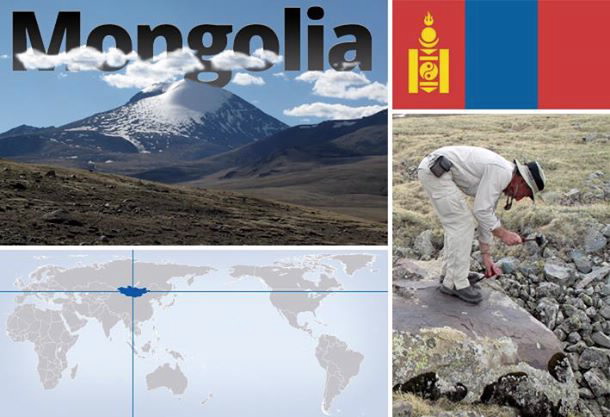Major climate events during past global ice ages did not happen simultaneously or with the same intensity world-wide, new data from ANSTO’s latest climate research has revealed. The research, which used sophisticated nuclear dating techniques on rocks from Mongolian glaciers, could impact future climate change forecasts.

Reported in the latest edition of Velocity, the research for the first time shows that Mongolian glacier advances during the last ice age were not synchronised with alpine glaciers in Europe and North America, suggesting that climate varied significantly between continents.
Dr David Fink, Leader of ANSTO’s Cosmogenic climate Archives of the Southern Hemisphere (CcASH) project, said ANSTO has refined a dating technique which measures nuclear signals, scientifically termed ‘cosmogenic radioisotopes’, produced in rock surfaces when they are freshly exposed after glaciers retreat to cosmic rays coming from the sun and outside the solar system. This technique can accurately date the time glaciers advance and retreat.
“The method is quite unique and the build-up of long-lived radioisotopes called Beryllium-10 and Aluminium-26 to date glacially transported rocks is now opening new doors to providing high resolution climate records from mountain regions around the world,” he said.
“By ‘counting’ the atoms using Acceleratory Mass Spectrometry we can, for the first time, date the geological event that exposed the rocks to cosmic rays and from that establish a chronology of past glaciations going back as far as three to four million years and as short as a few thousand,” he said.
“We are also applying the same technique to measure the glacial episodes in Tasmania and New Zealand over the last 100,000 years.”
Dr Henrik Rother, the ANSTO post-doctoral research scientist who recently went to Mongolia for the second time to bring back rock samples, explained that glaciers are sensitive indicators.
“The expansion or retreat of mountain glaciers mirrors changes in temperature or precipitation and glacial records are therefore extremely useful to help scientists reconstruct past climates and to date there was little dating information on how the glaciers responded in central Asia,” he said.
“Central Asian mountain regions are so remote and landlocked, we wanted to test how past climate affected these regions and whether or not this was similar to other parts of the globe.
“At ANSTO dating rocks and deposits from glacial moraines is providing basic research to help improve models of past climate variability which aims at improving predictions of future climates which will be different over various parts of the globe,” he said.
The research was made possible through collaboration with German Professor Frank Lehmkuhl, a world leader in climate research in central Asia from the University of Aachen. The idea was first conceived at a scientific meeting in Tibet in China when Professor Lehmkul expressed an interest in ANSTO’s dating techniques. Dr. Rother was then invited to join the first Mongolian expedition in 2007.


